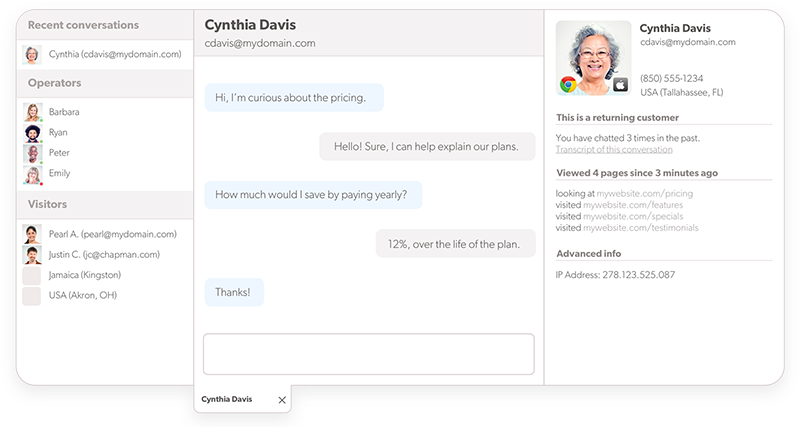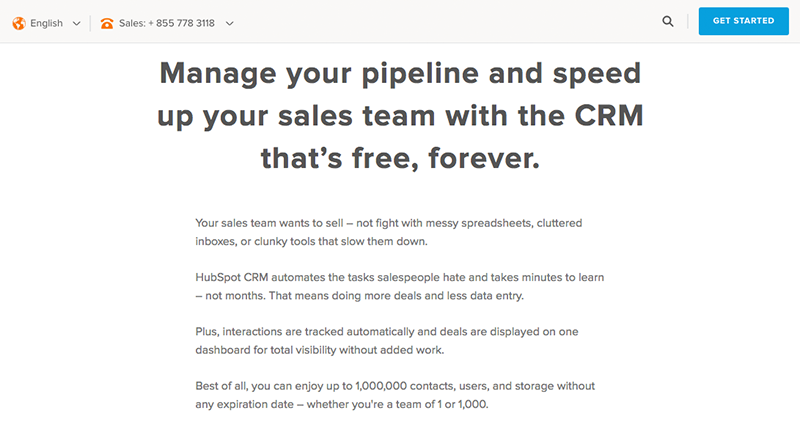How to Solve Your Customer's Problems and Make Money Doing It
You’ve invested the time and effort to craft a solid sales message and marketing campaign. The offer is great, the price is right, and people should be flocking in your doors and email inboxes to purchase. You’ve even paid a company to help get your website to rank in the top five of Google’s search results page, and your site’s traffic has soared as a result. But somehow, the sales aren’t rolling in.
Turns out, ranking #1 in Google doesn’t directly get you sales. Helping people does.
Back to the Drawing Board
At the heart of every potential sale is a person with a problem. Is your business the right solution to the problem? Does your prospect feel understood, cared for, and compelled to partner with you to work towards a solution? Before you sell, it’s imperative that you understand the person and the problem. Otherwise, you’re marketing blindly. Here’s where to start.
1. Stop Trying to Think For Your Customer
Instead of developing products and messaging around inferences and feelings, ask the consumer directly. Start with a simple survey asking about their pain points (there are a ton of great chat bots and survey tools out there right now), interview people as they use your site to uncover frustrations, and read through your reviews and testimonials.

Photo via Olark.
Uncover why your prospect went looking for a solution and other approaches they’ve tried. Why have your customers chosen you? What almost stopped them from choosing you? Before you prescribe the solution, flush out the problem, and observe it from multiple angles. It’s your goal, as the Master of the Solution, to better understand the problem than your prospects and customers.
2. Build Content that Resonates with Solution-Seekers
Your prospects and customers don’t want content shoved down their throat. They want to encounter messaging that speaks to them and their problems. Have a conversation that brings them to the conclusion that you are the right fit and worth their dollars.

Screenshot via Hubspot
Much of the best content comes directly from the mouths of your customers, which is another reason why surveys and interviews are critical. There is no better way to help someone feel understood than to translate their very own thoughts and feelings into helpful messaging. Did a prospect express frustration around cost? Include messaging about value, or offer a free trial. Even better: when you know their pain points, include a list of features that directly addresses those pain points.
3. Rid Design of Disruption and Trend
So many brands are latched on the heels of the latest design trends. Heard of parallax? Ghost buttons? Hero rotator images? Perhaps you’re not familiar with the terminology, but no doubt you and your competitors have toyed with one or all of these design trends.

Look familiar? Screenshot via ABC.
It’s rare that businesses choose design elements based on actual research; typically, design is dictated by a template you purchased, or someone on your sales team saw an effect on a competitor’s site and thought it would be “cool” to implement on yours. If everyone else is doing it, you should be too, right?
The problem with trend is that it’s often broken from its original context and applied to a million different projects, despite relevance and suitability. When design dictates development and content, you end up with a pretty portfolio site that is irrelevant to your target audience. And all your money goes to making a piece of art that no one buys.
The best design adds to, and doesn’t detract from, user experience. It’s a supporting player that should be the last thing people notice. It should help logically guide users through your site architecture, keeping interest up and building trust in your brand.

Easy to digest and navigate site via Ted.
At the end of the day, your content is the star of the show. It is what resonates with your customers at their core, communicating that you can solve their problem and solidifying the connection that supports a lasting, mutually-beneficial relationship.
4. Invest In an SEO Strategy that Seeks to First Answer a Query
At the heart of SEO is simply being the best answer to a particular query; it’s inherently about solving problems. No doubt, you’ve searched yourself for product or service pricing, clicked on one of the top search results that you expected to contain pricing information, and much to your disappointment found no pricing but a barrage of CTA popups and contact forms.

Screenshot via Google
What happens when people don’t find what they’re looking for? They’ll exit your site. They’ll delete your email. They’ll go somewhere else because there will always be someone else who is actually solving their problem.
Be a smart marketer and lead your team to new thinking. If your business has been stuck in a rut of one-sided communication and has no idea what your customers and prospects actually want, be the voice for them. Seek to understand pain points and solve the problem; don’t add to a million other voices trying to tell consumers what they want. If you put in the effort to understand your prospects, they will reward you.
MONTHLY MARKETING INSIGHTS.
Get thought-provoking and actionable insights to improve how your firm makes a connection with your customers.





LEAVE A COMMENT